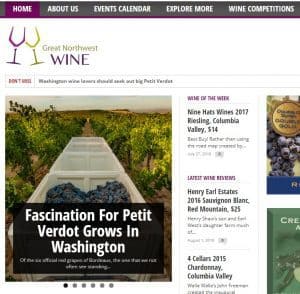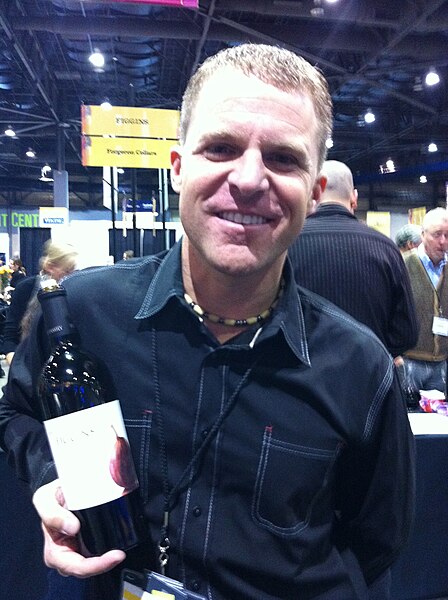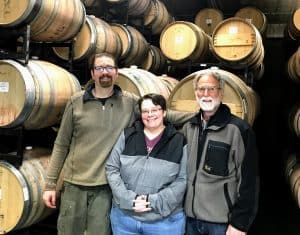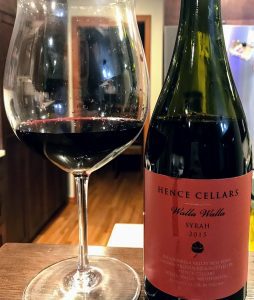The website Glass of Bubbly regularly publishes a list of their Top 200 Social Media Influencers in sparkling wine. Now while most people think of “influencers” as Instagramers and wine writers (none of which are The Real Influencers of the Wine World), the Glass of Bubbly list is made up almost entirely of winery brands.

I’ll admit that I don’t quite get the methods or metrics that Glass of Bubbly uses to compile their rankings. But as a regular Twitter user, I’m always game to finding new accounts worth following. So I went through and looked at all 200 accounts on this list.
I found that, much like winery Instagram feeds, a lot of them suck.
Now I did find a few worth following (which I’ll tag throughout this piece), but the most common theme of many of these accounts is that they were boring as hell. Instead of engaging and unique content, most winery Twitter accounts fall back on trite bottle shots and canned ad verbiage–if the account is being updated at all.
Unfortunately, many brands (like Jacob’s Creek) have not had a new post in months or even years. This is a darn shame because Jacob’s Creek Twitter actually had a lot of interesting posts that would make me want to follow them.
And there we get to the crux of it all. To make an account worth following, it has to be interesting.
It has to have content that you don’t find easily from other sources. It has to give you a reason to stop scrolling for a moment and pay attention. You’ll never “influence” someone if you don’t interest them first.
For most people, social media is an escape. So the question that every winery should ask themselves about their Twitter is,
“Is this a feed that someone would want to escape to?”
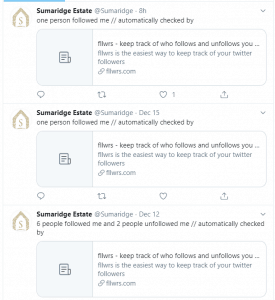
I wasn’t planning on linking to any of the negative examples, but this Twitter feed baffles me to no end.
If you’re running your Twitter feed like a neverending ad or parade of bottle porn, then the answer is a resounding “No.”
More so than in any other type of marketing, wineries need to think like consumers when it comes to their social media.
Think about what you like seeing and reading about when you’re looking for a distraction from the day.
Think about what makes you stop scrolling.
Is it an endless stream of hashtags and emojis? Probably not.
Nothing but links to your IG or FB page? Erm.
And why on earth would any consumer care about an automated bot-message noting the number of people who followed & unfollowed you?
Plus, if I live several hundred miles away and can only buy your wine online, knowing what your holiday tasting bar hours are is not going to be a compelling reason to follow you.
But you know what is a compelling reason?
Monsoon Valley (@MonsoonValleyUK) sharing Thai dining customs and the unique sights of their homeland.
Parés Baltà (@paresbalta) posting a surprise they discovered while pruning, which highlights the biodiversity in their vineyards.
Rives-Blanques (@RivesBlanques) in Limoux, France pulling out an eye-catching quote from Jancis Robinson that “white wine can look even more alluring in a decanter than red.”
Raventós i Blanc (@RaventosiBlanc) in Spain sharing BABY SHEEP! First rule of winery Twitter–If you can post videos of baby animals, always post videos of baby animals. Guaranteed scroll stopper. Though do sheep always growl like that?

Dear, let’s kiss underneath the “poop on a stick.”
Dunleavy Vineyards (@DYvineyards) in Bristol & Somerset sharing an Italian greyhound puppy so small that they needed to use a pen for scale.
Ambriel Sparkling (@Ambriel_UK) of West Sussex shattering all my romantic notions about mistletoe with a tweet that sent me down the Google rabbit hole looking up the origins of the word “mistletoe.”
Carolyn Martin (@creationwines) of Creation Wines in South Africa tweeting (and sharing retweets) about what makes Overberg unique and worth visiting.
Show us the people and personalities behind your brand.
Wine is an agricultural product with dozens of distinct hands having a role in shepherding it from grape to bottle. Show us those hands and the heart of the people behind them because that is what truly makes your wine special.
Like Curtis Fielding of @FieldingWinery, who is apparently a big Toronto Maple Leafs fan and is fond of retweeting National Lampon Christmas Vacation clips. While I love geeking out about terroir, stuff like this is the cherry of the terroir sundae that people can relate to much more than soils and climate.
Biddenden Vineyards (@BiddendenVine) in Kent going back into the family archives to post old newspaper clippings from 1985 that shows that English sparkling wine isn’t that recent of a phenomenon.
Lakeview Wine Co. (@LakeviewWineCo) in Niagara-on-the-Lake, Ontario spreading some holiday cheer with their staff’s toy drive.
Featherstone Winery (@featherstonewne) in Vineland, Ontario celebrating the last pressing of the harvest.
The human touch and face
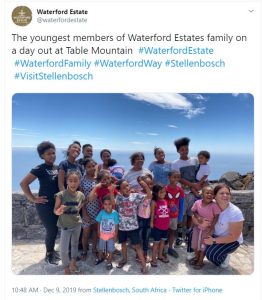
When scrolling through a social media feed, our eyes are drawn to faces of people. Not only does it make us more likely to stop scrolling and pay attention to who is posting it, but we’re also more likely to respond to what we see thanks to the “Jennifer Aniston cells” in our brain.
Babylonstoren (@babylonstoren) in the Drakenstein Valley of South Africa paying tribute to their “pruning maestro” on his 80th birthday. In my article How Can Wineries Use Instagram Better?, I raved about a similar post from the Washington winery Côte Bonneville.
Waterford Estate (@waterfordestate) in Stellenbosch, South Africa highlighting the next generation taking a family trip to Table Mountain.
Reif Estate Winery (@Reifwinery) in Niagara-on-the-Lake, Ontario making excellent use of the #ThrowbackThursday hashtag. This is something that every winery should do. Share that nostalgia. Share the bad hairdos, shoulder pads, handlebar mustaches and bellbottoms. Those things resonate because we all have our own nostalgia and “Oh my god, did we really look like that?” pictures.
Show us the people and personality of your brand. That is why we follow your feeds.
Treat Self Promotion like Salt
By all means, post that great review or article mention. But make sure you’re sprinkling it in between other worthwhile and engaging content. Otherwise, we’re back to the same boring old ads. And, again as a consumer, why should I spend my time looking at your ads? If you want consumers to commit to following your Twitter account (and eventually seeing some of those ads), you have to make it worth their while.
A few wineries that do this well include:
Bob Lindo (@camelvalleybob) of Camel Valley sharing what makes English sparkling wine worth discovering with a well-produced Vimeo interview with BBC’s Saturday Kitchen.
Rathfinny Estate (@RathfinnyEstate) throwing out a bit of geeky wine history about Roman viticulture while encouraging folks to visit them in Sussex.
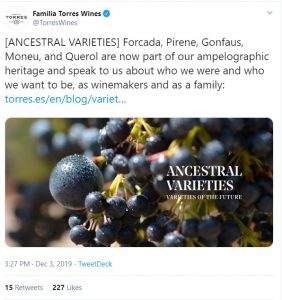
Geeky and sentimental.
Familia Torres Wines (@TorresWines) has an outstanding winery blog so their posts highlighting their efforts to revive ancient varieties in their vineyards definitely stands out from the pack.
Dr. Loosen Wines (@drloosenwines) in Germany is headed by the legendary Ernst Loosen. Their social media team does a great job of highlighting articles and short videos featuring Loosen.
Newsflash: Wine drinkers who follow wineries on Twitter might actually like reading about other wines.
Know your audience. Not everyone is going to bother looking up the Twitter handle of a winery to specifically follow them. A lot of times, wineries are getting follows because Twitter’s algorithm is recommending their accounts to folks based on similar interests–such as WINE!
So make use of the retweet feature and tweet out interesting wine articles that capture your attention. This adds value to your feed. It can also help increase engagement, making your Twitter posts more likely to show up in other folks’ feeds.
A great example is L’Acadie Vineyards (@lacadiewine) in Nova Scotia who commented on Alice Feiring’s recent piece in The New York Times pondering if the Natural Wine Movement is dead.
Denbies Wine Estate (@denbiesvineyard) in Surrey, UK got a mention in this article about interesting dessert wines from around the world. But they didn’t make the tweet promotional and all about them. Remember, you want your social media feed to feel more like an escape for wine lovers than an endless ad. Well played, Denbies.
Even Bottle Porn can feel less “porn-ish” with meaningful content behind it.
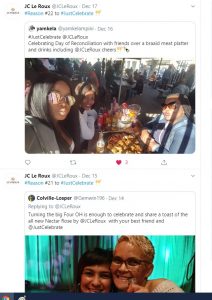
Why hire models to pose with bottles when you could retweet photos of real live consumers *actually enjoying* your wine?
Villiera Wines (@villiera) in Stellenbosch, South Africa does this nicely with explaining the history of the wine as well as the meaning behind the color choices on their label. WAY less boring than another beautiful shot of bottles held by beautiful people in beautiful locations.
JC Le Roux (@JCLeRoux) in Stellenbosch, South Africa let their consumers supply the bottle shots with very effective use of their #JustCelebrate 🥂 hashtag. This is a terrific example of engagement and what I was desperately seeking from wineries in my post One Night Stands and Surprises. Bravo JC Le Roux!
Who else I followed from the Glass of Bubbly list
As I went through all 200 accounts, I focused on the most recent December tweets (if there were any). If I saw at least 2 to 3 posts of engaging content, I followed them.
Flat Rock Cellars (@Winemakersboots) in Ontario, Canada.
Klein Constantia (@KleinConstantia) in Capetown, South Africa.
Henry of Pelham (@HenryofPelham) in St. Catharines, Ontario. Admittedly more “bottle porn-ish” than I typically follow, but their Anchorman-inspired caption on their ice wine grapes made me smile and earned their inclusion here.
Prosecco Superiore (@ProseccoCV). One of the few non-brands on the Glass of Bubbly list.
Fox & Fox (@sussexvineyards) of Sussex, England.
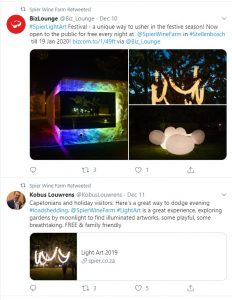
Apparently the Spier Light Art Festival is quite a thing to experience in Stellenbosch.
Spier Wine Farm (@SpierWineFarm) in Stellenbosch, South Africa.
Katnook (@Katnook) in Coonawarra, South Australia.
Ridgeview Wine (@RidgeviewWineUK) in Sussex, England.
Bench 1775 Winery (@bench1775) in Penticton, British Columbia. Another Twitter that is a little heavy on the bottle porn but won me over with posts about the ice wine harvest. Truly a labor of love to go out in sub-zero temperatures at night to hand-harvest grapes.
Ravine Vineyard (@RavineVineyard) in St. Davids, Ontario.
Red Squirrel Wine (@RedSquirrelWine) in London, UK.
Hattingley Valley (@hattingleywines) in Hampshire, UK.
Breathless Wines (@BreathlessWines) in Sonoma, California.
Vasse Felix (@vassefelix) in Margaret River, Western Australia.
Balfour – Hush Heath Estate (@HushHeath) in Kent, UK.
Godstone Vineyards (@godstonevines) in Surrey, UK. If you’re a fan of Downton Abbey and the Christmas time classic Love Actually, you’ll be right at home following this winery.
Schramsberg (@Schramsberg) in Napa Valley, California.
Coates & Seely (@coatesandseely) in Hampshire, UK. I’ve realized in compiling this list that a lot of UK wine producers have a very solid winery Twitter game going on.
So check out these accounts and let me know what you think!





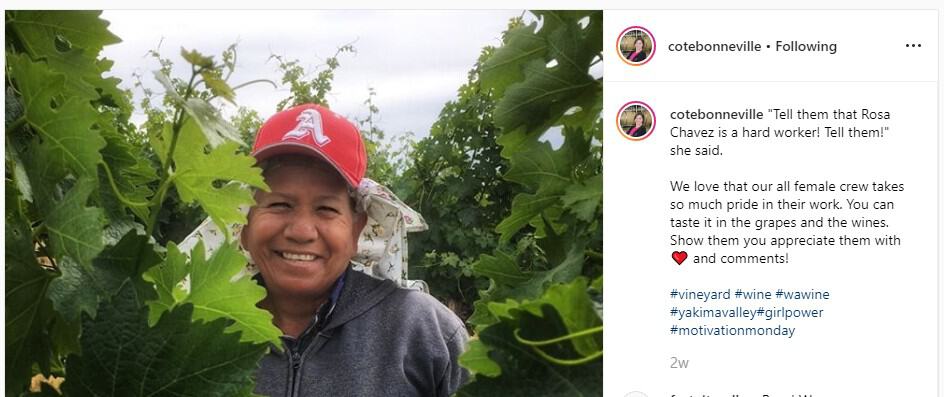
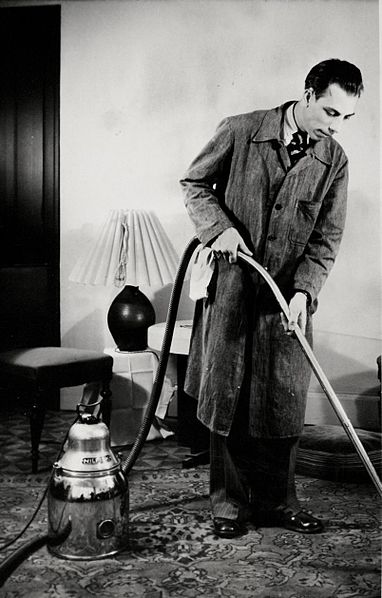
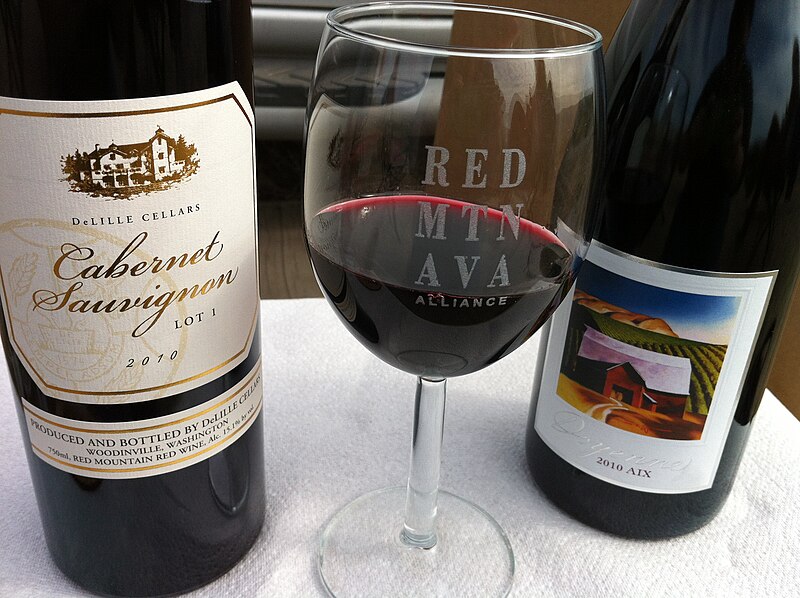 Yeah, I know it kinda feels like we just had a Washington Wine Month not that long ago.
Yeah, I know it kinda feels like we just had a Washington Wine Month not that long ago.